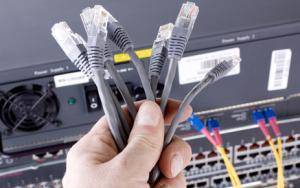Technology is always in a state of change. Old technologies are constantly being rendered obsolete by newer ones and this trend is not likely to cease anytime soon. This has happened throughout history as technology has evolved and consumers’ expectations change. Even something as new as DSL Broadband (Digital Subscriber Line) is now being slowly but surely replaced by the newest entrant in the field of networking called Fibre Optic Broadband.

While regular broadband connections make use of copper cables to transmit data in the form of electrical signals, fibre optic communication makes use of light to transmit the data in the form of light pulses. Fibre cables are made up silica glass with two different refractive indices. The difference in the refractive indices ensures that the pulse of light gets internally bounced millions of times but never leaks out of the cable.
Regular DSL Broadband
Regular DSL broadband has already been in place and has been actively for several years now. With the existing telephone network, deploying DSL broadband was quite easy and non-cumbersome. All that a customer needed was a telephone connection, a modem and a router or a switch, in case the connection needed to be shared among multiple users.
Regular DSL broadband uses high frequency electrical signals to get the data transmitted. However, this technology has its own set of limitations when it comes to overall speed and performance. Regular broadband can only reach speeds of up to 6MBps (download) and 640KBps (upload).
Fibre Optic Broadband
Fibre optic connections make use of the one physical quantity that can achieve the highest speeds on the planet and off it – light. By converting electrical signals into light, fibre optic broadband services can achieve ultra high speeds that regular DSL broadband can never even dream of. All over the United Kingdom, a reliable fibre optic network is already being put in place. The technology in use, called Fibre-to-the-cabinet (FTTC), allows the users to experience a significantly faster connection. Speeds as high as 40Mbps or even 100Mbps (download) and 5MBps (upload) are now achievable through FTTC technology.
The Major Differences
The higher speed in case of fibre optic broadband is the obvious advantage and the greatest difference between the two. The underlying technologies also differ greatly, as DSL uses electrical signals transferred via copper lines, while fibre connections employ light to transmit the data from one point to another. Yet another major difference would be the devices used to get these connections into one’s home. While a simple router and a modem are all you need to get connected to the online world with a DSL connection, you need a special fibre optic modem to enjoy the higher speeds that come with fibre optic broadband.
